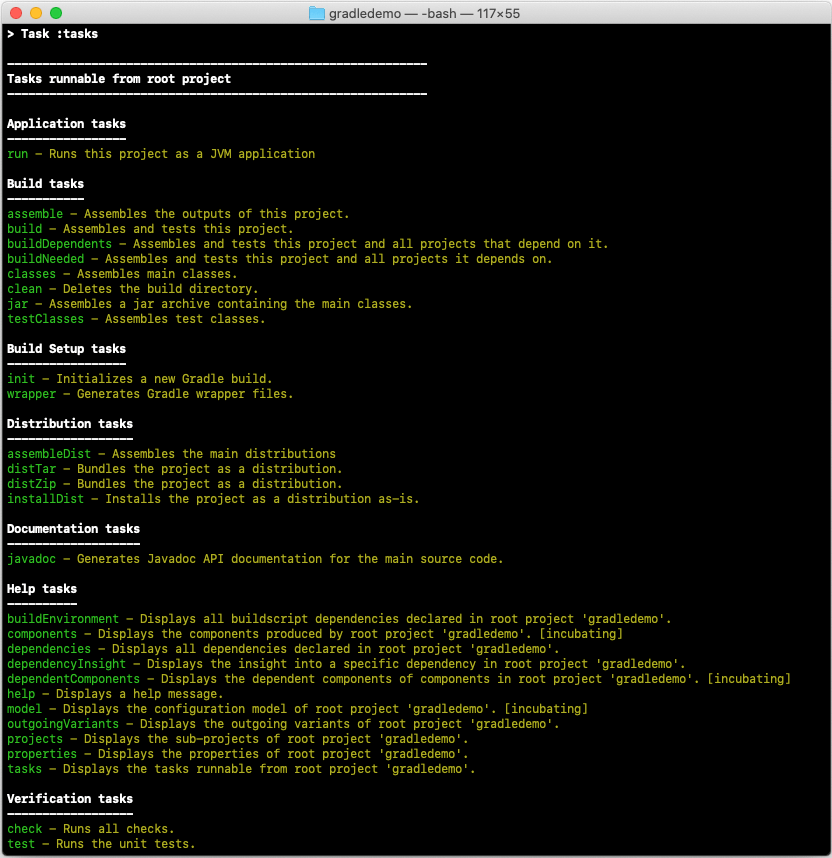Blog
November 4, 2020
Gradle is a popular choice for Java developers who want flexibility and performance in a build automation tool.
In this blog, we give an overview of Gradle, how it works, why it’s needed, and provide examples of Gradle builds.
What Is Gradle Java?
Gradle Java is a modern automation tool used in software development for project build automation, and an essential part of building mobile applications.
What exactly does “automation tool” mean in the context of Gradle Java? Well, it is what you probably are thinking – you hit a button and receive a result based on what you have automated.
Having said that, let’s jump from the general explanation to the software development field, because that is where Gradle is used the most. Any application that is now in your pocket (I mean in your smartphone) is a product of automation. The application is made of many files of source code and uses many libraries.
Many steps go into putting together a final product, called the “build” of the application. The output of the build is usually an application artifact that is tested out. If it passes tests, it is shipped to your smartphone.
Do you notice how every week you see a new feature in your mobile apps? With every update, you receive a new build of each application. In fact, there were probably many builds done before you even received an update.
So how is it possible that you are still receiving these updates so fast if there is a long build process? The answer: automation tools. Gradle allows you to specify the project build (putting source code together, linking libraries, etc.), and then every time you make a change, you can just simply “hit the button” and Gradle automatically completes all of the steps for you.
Gradle is often used in the development of JVM applications, written in languages such as Java or Kotlin. Its direct competitors are Maven and Ant. While these tools largely perform the same function, there are huge differences in how they are doing this. You can check out the official comparison between Gradle and Maven here.
🧩 Rather use Maven? Download our MVN Commands cheat sheet.
Back to topHow Does Gradle Build Work?
The Gradle build configuration is stored in a file called build.gradle that is based on a Domain Specific Language (DSL). This is a specialized scripting language that combines declarative and imperative constructions. This configuration file is located in the root folder of the project and defines a project, its tasks, dependencies, and other project-related items. Gradle supports multi-project build, where every project has its own build.gradle file located in the project root folder
A “task” is an atomic unit of work that describes what should be done when it's invoked. A build can be described as a set of tasks. Each task consist of actions, inputs, and outputs; every part is optional.
To see a list of all available tasks for a Gradle project, you can execute “gradle tasks” in the command line. For a simple Java project, you can choose from predefined tasks from the following categories:
- Build tasks
- Build setup tasks
- Distribution tasks
- Documentation tasks
- Help tasks
- Verification tasks
- Other tasks
 Back to top
Back to top
Example of a Gradle Mobile Application
As mentioned before, the most important file is build.gradle. But what does this file look like, and how do you specify the task?
Let’s say you want to create a task that will print out “Hello world!” into the command line. The build script for such a task would be the following:

There is nothing more in the file – just those five lines. To execute the task hello, open a command line in the folder with the build script, and type gradle hello.

Congratulations, you’ve just created your first task!
Obviously, build scripts are usually longer and contain more tasks and, most importantly, contain dependencies for a project. If you are curious how it may look, you can check build.gradle.kts for a very well-known example project of Pet Clinic on this GitHub repository spring-petclinic/spring-petclinic-kotlin.
Have you noticed the .kts extension in the build.gradle? That is not a mistake. You can use Kotlin to write your build script! How awesome is that? And if you are not familiar with Kotlin, Groovy is used as a default build language.
Back to topWhat is Gradle Java Used For?
Managing the project lifecycle is a complex task that one can do, but requires a huge effort. Because of its complexity, it is very easy to make mistakes while completing these tasks manually. That's where Gradle Java comes in.
Take dependency management, for example. Can you imagine manually downloading and configuring the library that your project is using every time it's updated? Or what about manually executing all the commands to compile classes, moving them to the right folder, or executing tests manually? I could continue naming all the steps, but I think you get the picture that this is not the way to do it.
The more efficient way is to use automation tools like Gradle that can do everything for you whenever needed. In the event you need to automate something that Gradle can’t do out-of-the-box, you can write your own task once and rely on your manual work.
Back to topFinal Thoughts
As explained throughout the article, Gradle is a very useful tool for the project lifecycle and build management. Rather than ask whether you should be using a build automation tool, the question should be which tool to use.
Gradle has been around for more than 13 years and has been widely adopted by many development teams. While it is a bit younger than its competitor, Maven, Gradle has the same functionality and, in some cases, outperforms Maven.
Get Started With JRebel
Want to see how much application development time you'll save with JRebel? Get started with a free 14-day trial!
Additional Resources
Want to be even more productive in your Java development? Check out our webinar where Curtis Johnson, Product Manager at JRebel and XRebel, shares his five favorite time-saving tips for Java development teams.
For more information on build automation tools, check out these related resources:
- Blog – Ant vs Maven vs Gradle: Java Build Tools Comparison
- Blog – Getting Started With Java Build Tools
- Blog – Java Build Tools for Dependency Management
- Blog – Making Gradle Builds Faster
